| 1 | Javan spitting cobra |
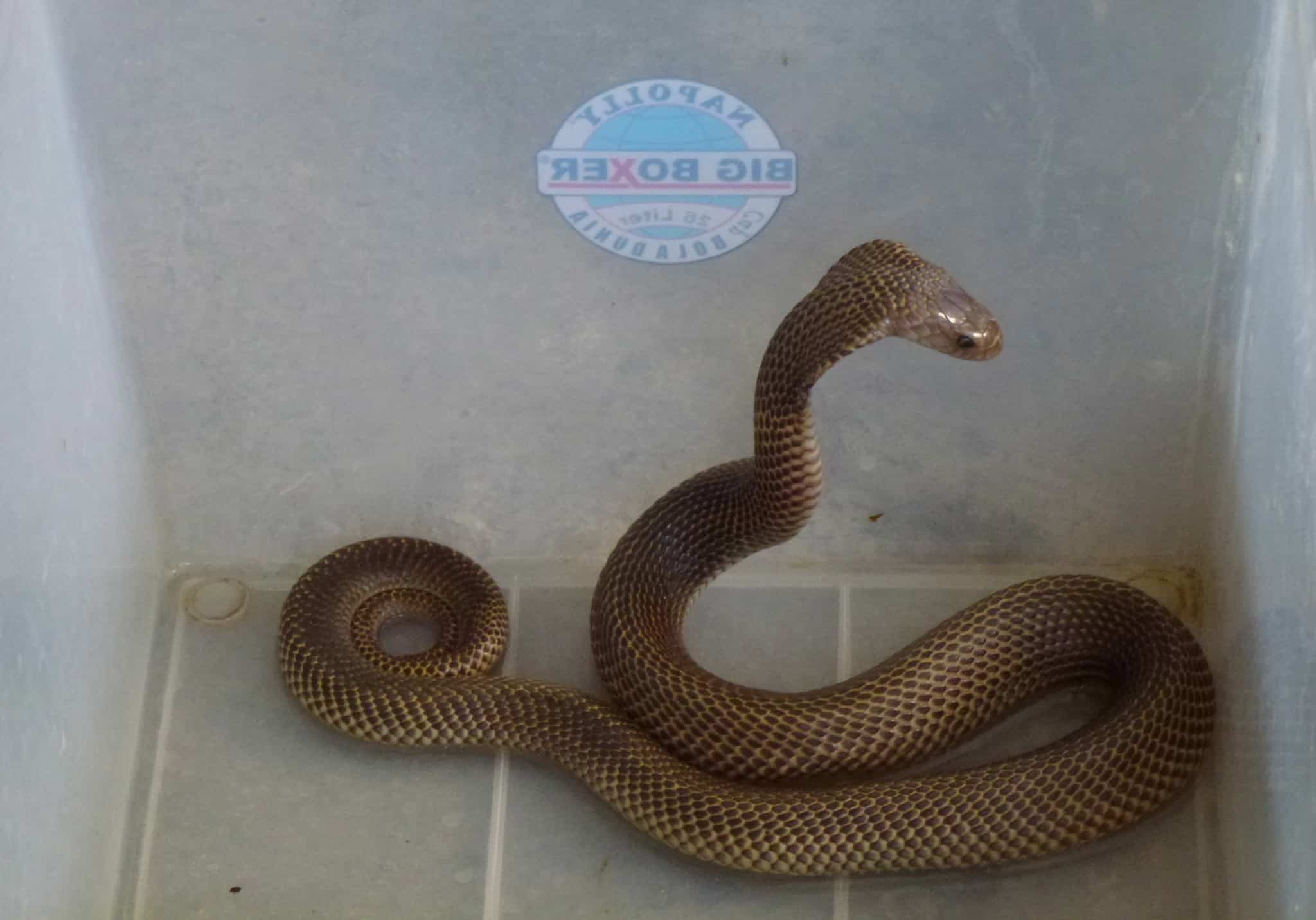
A cobra is already a terrifying foe to meet in the wild. You hear a piercing hiss, spin around, and come face to face with an immensely fast and agile opponent. Naja sputatrix venom is rich in three-finger neurotoxins, and is difficult to treat with Indonesia’s main antivenom. Permanent deformities are possible, due to high concentrations of cytotoxins. Any cobra is harder to dodge than say, an adder.
But spitting cobras take this a step further with the ability to shoot a 5-10mg venom globule into your eyeball. The Javan spitting cobra lives on its namesake island in Indonesia, home to the capital city of Jakarta. It’s comfortable in urban environments, slithering down concrete streets as though they own the place. Naja sputatrix is particularly common in the campus of Universitas Indonesia. Ordinarily with a cobra, you can instantly take a few steps backwards and survive, but this species can destroy the cornea of your eyeball while you breath a sigh of relief.
Temporary blindness is the norm, alongside extreme pain. Javan spitting cobras may flee at high speed into vegetation, but they may erupt with a savage fury; they’re a difficult snake to predict. This species averages at 1-1.5 metres, and can be grey or light brown.
| 2 | Black mamba |

Black mambas are a global icon of fear. Except maybe eating rodents in farmers’ crop fields, there’s no possible way that meeting one can make your life better. Black mambas combine several individual dark arts into an apocalyptic whole. First is the venom itself. Black mamba venom causes rapid paralysis, with post synaptic neurotoxins that block brain signals from binding to acetylcholine receptors in muscle cells. Other symptoms include blurred vision and a metallic taste.
Coral snakes act similarly, but black mambas differentiate with a dangerously high venom yield. One bite can inject 400mg, which rapidly distributes through veins and capillaries to every cell. This would still be survivable, if you could stand back, but black mambas have an exceptionally fast and twitchy speed. Black mambas aren’t calm snakes; they’re nervous and unpredictable. They’re rumoured to out-slither a racehorse, and even chase accelerating cars down highways. While exaggerated, black mambas are undoubtedly one of nature’s fastest snakes. In a close quarter encounter, they can bite your chest with no warning. They may be no time to react.
Black mambas aren’t reluctant to strike in the slightest. They can raise their upper body a full 1 metre off the ground. Similarly, black mambas have a reputation as one of the most treacherous snakes to keep in captivity, with even flinging them a defrosted mouse a dangerous challenge.
| 3 | Mexican pygmy rattlesnake |
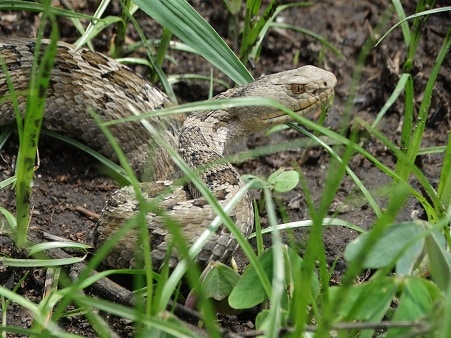
This little known species lives in southern central Mexico, in habitats ranging from pine-oak forest to dry plains of cacti and agave. They’re particularly abundant near the city of Huitzilac, elevation 2560 metres.
Mexican pygmy rattlesnake (Crotalus ravus) venom is average for lethality. It lacks the neurotoxins of Mojave rattlesnakes, with the typical haemotoxins that destroy red blood cells and trigger spontaneous bleeding. Where they really shine is their ability to swarm people, for this is a rattlesnake that hangs out in gangs. Crotalus ravus is one of the most social family members. Groups of 100 have been observed together, rendering certain fields and footpaths out of bounds to locals.
It’s easy enough to step back promptly when a rattlesnake hisses at you from long grass. But with Crotalus ravus, you might stumble right into its mate. Turn right, and you’ll meet its cousin. Turn left and another 5 Mexican pygmy rattlesnakes will appear. Meanwhile, the locals will be chuckling at your overconfidence. Crotalus ravus is mainly found at high altitudes, becoming increasingly rare on the lower plains.
| 4 | Mangrove pitviper |
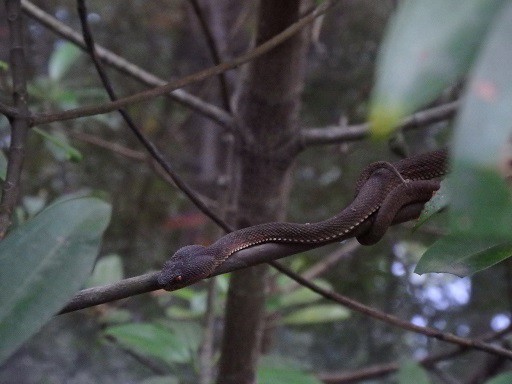
Gloom, murk, waist deep marshes, and thin, eerie branches. These are all things that the mangrove pitviper of Singapore loves. This species also inhabits Thailand and peninsular Malaysia, and uses spookiness to full effect, enjoying the spectacle of rising panic in humans that dare to intrude on its domain, before dispatching them with a single accurate bite.
Mangrove pitvipers reach 60-90cm, and are mainly black with a slight blue tinge. Their pupils are vertical slits, their eyes yellow to orange, and their diet partly consists of rival snakes such as mud snakes (Fordonia leucobalia). Mangrove pitvipers are arboreal snakes which cling to branches for the vast majority of the day. They’re a nocturnal species which may drop to the ground in darkness to hunt, or stay on their branch in coiled ambush posture. This is how they spring at people who walk past and fail to notice them. Mangrove pitvipers live in forests and forest edges, but compared to neighbouring pitvipers, they’re particularly common in wetlands.
One example is the Sungei Buloh wetland reserve of Singapore, which is also a hub for reticulated pythons. This is popular among bird watchers, but you may not notice the mangrove pitviper gleefully preparing to drop on your head. Your next task is to dodge the giant constrictor watching you with interest, as you stagger to the local hospital.
| 5 | Mulga |
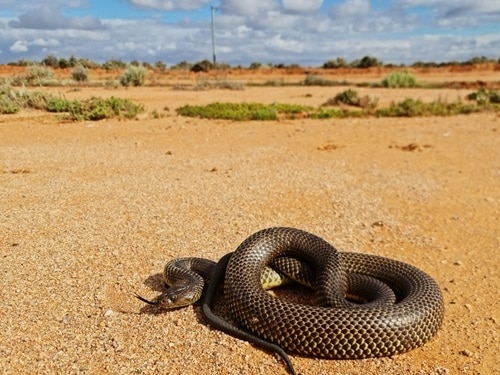
The mulga doesn’t care about you, or anyone apart from itself. Also called the king brown snake, this is a 2.5 metre venomous serpent which moodily prowls the Australian outback, attacking anyone that gets in its way. One day, the mulga could be resting on rocks by a dried out streambed. The next, it could be investigating a dark burrow on a barren outback plain. The day after that, it could be mindlessly attacking a road tripper whose car has broken down along a highway.
Mulgas are Australia’s longest venomous snake, and they have the personality to match. They mainly inhabit central and western Australia, avoiding the milder southeast, preferring the regions of Northern Territory and Western Australia. Mulgas have an even larger venom yield than the black mamba, at a record of 1350mg and a norm of 150-300mg. They also have a tendency to invade houses. Symptoms include swelling, nausea, headache, and unclottable blood.
Like the black mamba, their personality is almost unhinged. Mulgas are one of the most eager snakes to bite on earth. They’re the opposite of a deadly yet shy coral snake. The mulga views you as an obstacle to be brushed aside, and to achieve this, they clamp down on you arm and inject 1000mg of venom. Mulgas appear in towns like Alice Springs, but also remote, deserted outback, where it’s tricky to receive medical assistance. Mornington Wildlife Sanctuary is another place to meet this snake.
| 6 | Eastern brown snake |
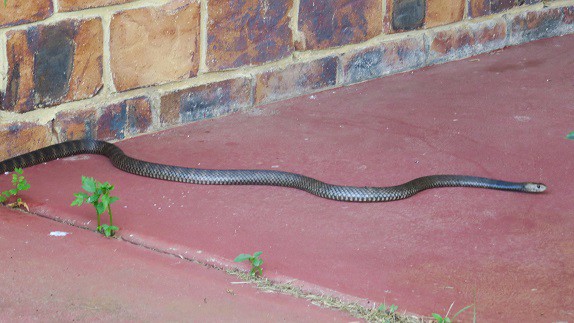
The mulga’s cousin the eastern brown snake cannot be ignored when it comes to snakes you would least want to meet. Pseudonaja textilis averages at 1.5 metres and mainly inhabits Australia’s east coast, including the outskirts of Sydney and Brisbane. Eastern brown snakes have a neurotoxic venom, containing unique molecules such as textilotoxin. Their bite is capable of inducing laboured breathing and weak muscles.
Over 30% of Australian snakebite deaths are caused by brown snakes. Like black mambas, the main reason encounters end badly is their nervous, twitchy demeanour. Eastern browns will throw themselves into a mid air S-coil at the slightest provocation. Movement spooks them, causing them to pounce. This video shows classic eastern brown snake behaviour. Only when the cameraman stayed still did the eastern brown snake finally leave.
On an open road, you have time to flee. The worst place to meet an eastern brown snake would be a tight confined space, like an alleyway, or just after closing your front door. Their strike is rapid, but there’s one saving grace: eastern brown snakes aren’t that accurate. A 2000 study found that 62% of strikes failed to hit the target.
| 7 | Bibron’s stiletto snake |
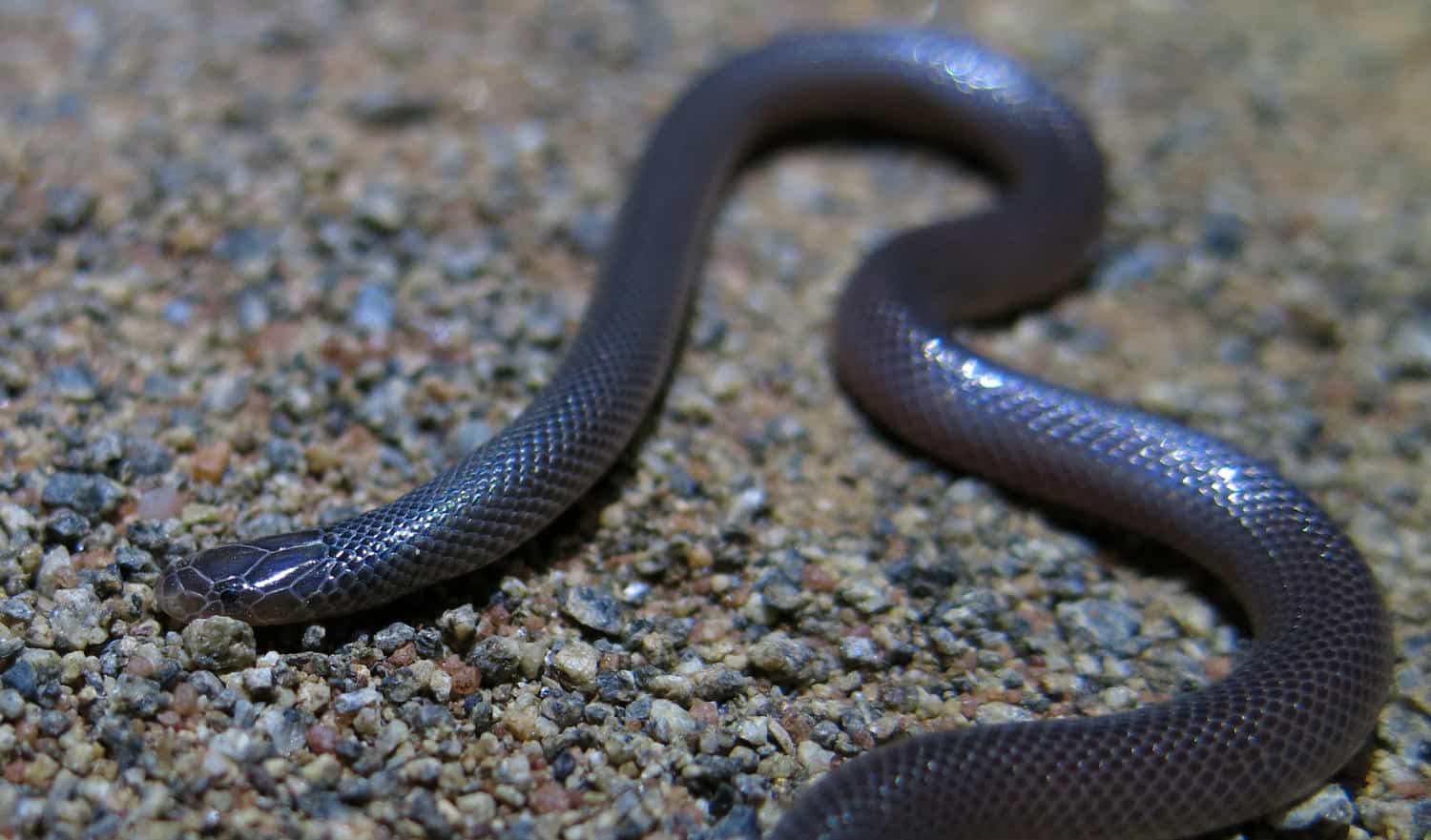
The first weapon of this African snake is sideways-angled fangs. The second is an extremely close resemblance to harmless thread snakes. Bibron’s stiletto snake (Atractaspis bibronii) lives in a swathe of southern Africa and is partly fossorial (underground dwelling). They live in savannah, woods and villages alike, and are mainly sighted after heavy rains which draw them to the surface. They measure 30-40cm, and have dangerously neurotoxic venom.
Up close, you can see that bizarrely shaped fangs stick sideways from their mouth. Picking up this snake rarely ends well. Just when you think they’re controlled, securing their head with a thumb and finger, Atractaspis bibronii will stab at you sideways, twisting their head at angles which barely seem possible. They’re experts at this stabbing manoeuvre, precise and efficient.
Atractaspis bibronii has a particularly mesmerising defensive display, as they arch their back to the sky, then slam their head to the ground. This is theorised to be a digging manoeuvre, but possibly a strange intimidation ritual. Atractaspis bibronii has a close resemblance to harmless thread snakes, which are equally black and shiny, and also appear after heavy rains.
| 8 | Speckled lancehead |
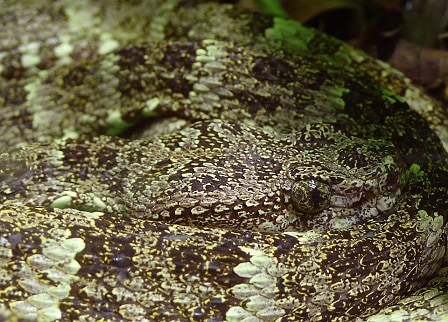
If you stumble into this snake, inches from its face, you’re in serious trouble. Not just because of its potent venom, but because they live only in dense jungle. You’re trapped in a world of lethal coral snakes and rivers that only a fool would wade through. You must travel many inhospitable miles before reaching a cure, unless you receive an impossible helicopter evacuation.
Speckled forest pitvipers measure 100-150cm, and are another branch dweller, clinging to them all day long. They’re closely related to the deadly Bothrops bilineatus, and have dozens of potent toxins, particularly cytotoxins and haemotoxins. If you get bitten by a speckled forest pitviper, then you’re a long way from home. You have stifling humidity, bloodthirsty gnats, and thick swamps to navigate before you can escape.
Speckled forest pitvipers are a dangerous snake to meet due to the claustrophobic, tight nature of their jungles. Encounters have a good chance of being face to face, within easy range of their explosive lunge. You might get luckier and spot one in a more spacious forest hollow. But there’s no telling what will happen if you enter the speckled forest pitviper’s domain. If you’re metres away, you’ll survive, as Bothrops taenitus is slow-moving. If you’re inches away, you may have mere milliseconds to react. There’s also a chance that a coral snake bites your foot while you’re distracted.
| 9 | Papuan black snake |
Papua New Guinea is one of the most poorly studied snake nations on Earth, and for wildlife overall. In November 2023, the Attenborough’s long-beaked echidna was rediscovered for the first time since 1961. Unidentified snake species are surely hidden in the Papuan jungle, and even confirmed species have little research.
What is confirmed is that Papuan black snakes (Pseudechis papuanus) are one of Papua New Guinea’s deadliest, and easily capable of killing anyone their fangs touch. This species belongs to the same Pseudechis family as red-bellied black snakes. They reach 2 metres, and are almost pure black, with only subtle patterns. A Papuan black snake will hiss and strike when cornered, and most worrying, it’s hard to tell if you are cornering them, the terrain is so thick. The venom is deadlier than Australian black snakes, and contains a rare neurotoxin called papuantoxin-1.
In the unpredictable oasis that Papua New Guinea somehow remains in 2023, there’s no telling when this species might be sneaking up on you. The jungled terrain makes reaching a village doctor’s hut difficult, let alone a state of the art hospital.
| 10 | Venezuelan lancehead |
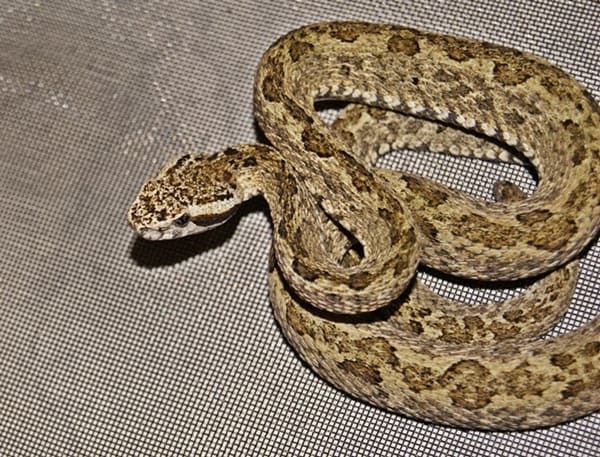
Part of the same Bothrops family as the speckled forest pitviper. Venezuelan lanceheads are far more ground-dwelling, and appear not just in jungle, but forest edges and villages. This species inhabits most of Venezuela, plus a chunk of Colombia. Bothrops venezuelensis is the guardian of South America. On a trek on foot from Central America, you’d have no choice but to pass through their territory, which represents a wall blocking you from the heart of Brazil.
Venezuelan lanceheads have a reputation for aggression. Along with common lanceheads (Bothrops atrox), they bite numerous Venezuelans per year, sending many to hospital, killing a few. The venom isn’t the most lethal, lacking neurotoxins, but contains potent cytotoxins and hemotoxins, which unleash necrosis and free bleeding, potentially causing permanent deformity. Nosebleeds are one symptom.
Venezuelan lanceheads hiss, lunge, mock strike, actual bite – all the party tricks you’d expect. This species has a cryptic colour scheme. Their brown and gold tones are majestic in photographs, yet blend surprisingly well with the dense Venezuelan undergrowth. This species is relatively slow, unlike a black mamba, but can be very difficult to spot, and therefore avoid a duel with.
